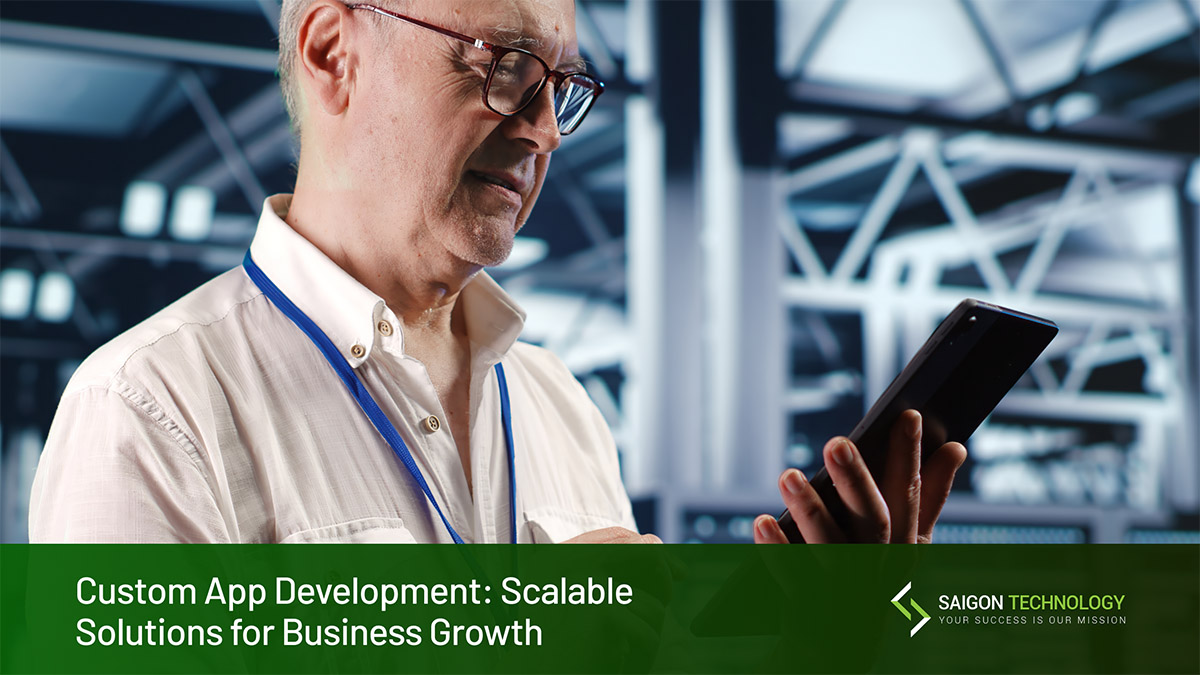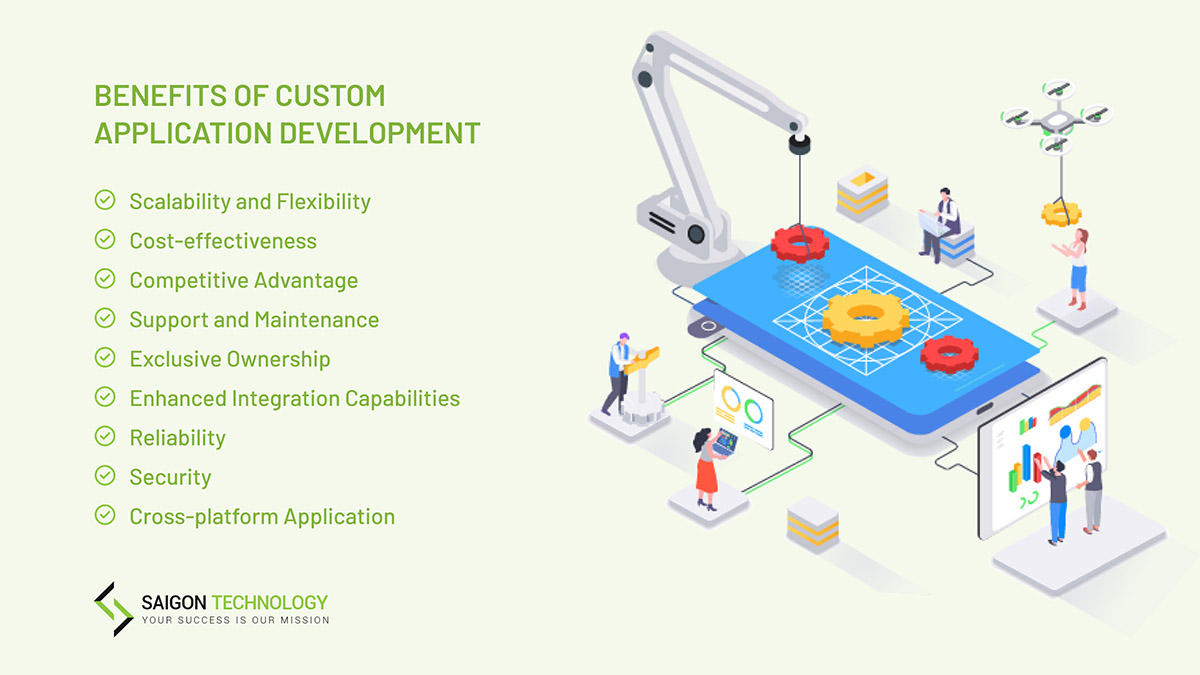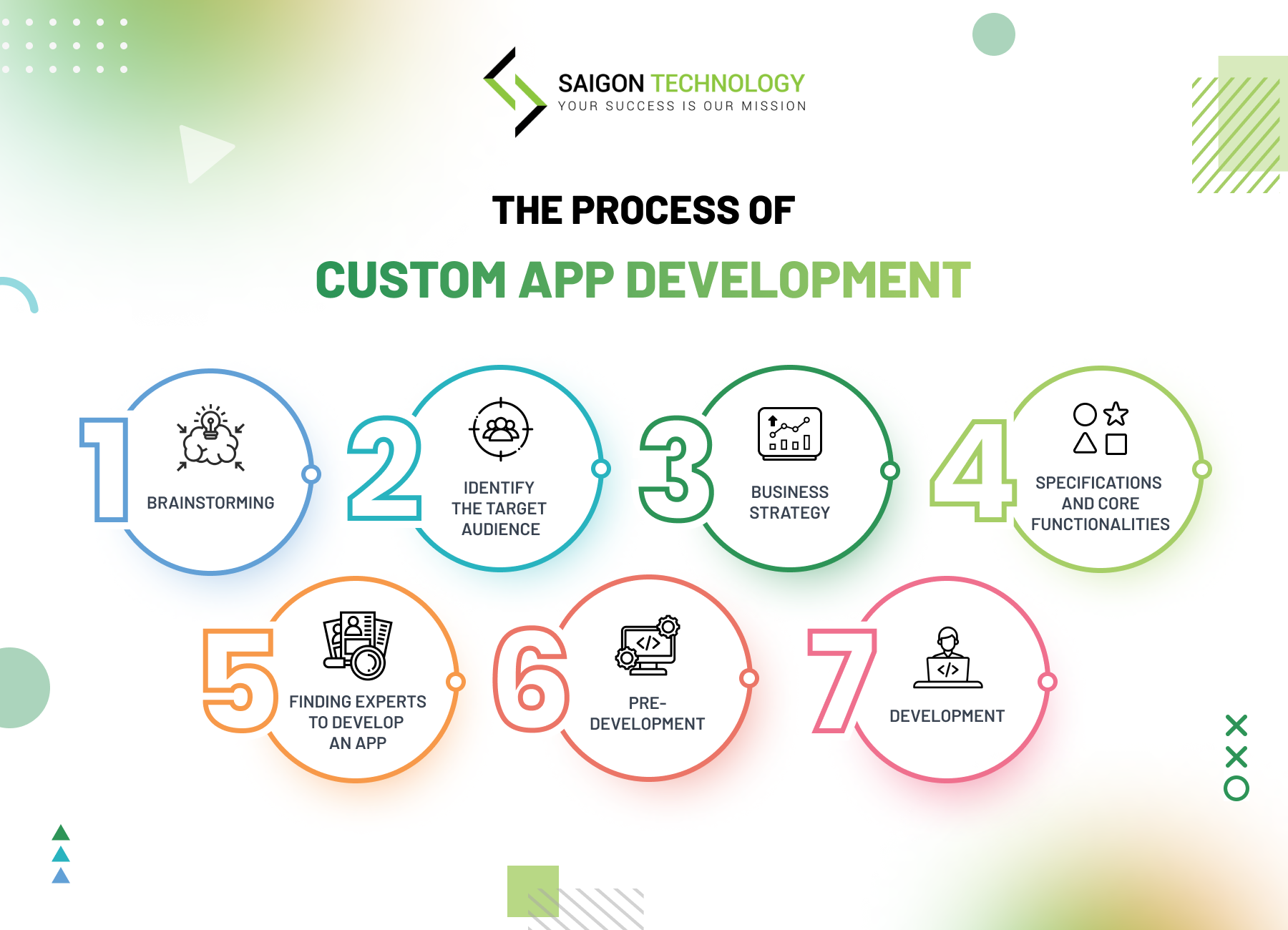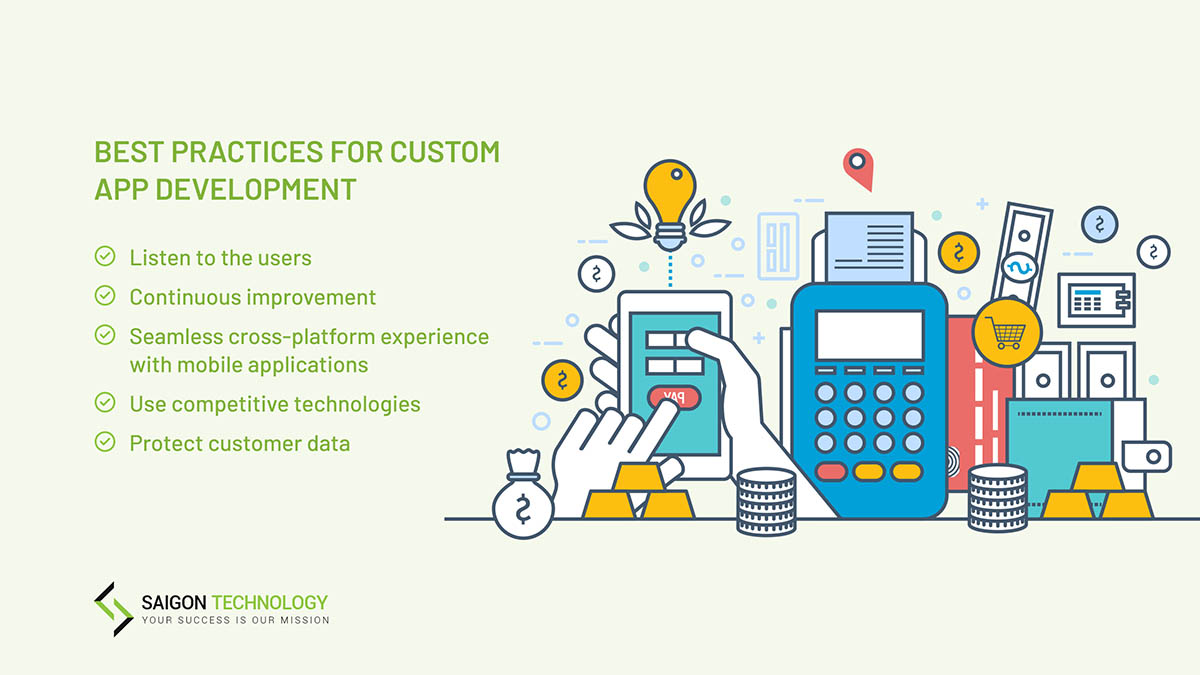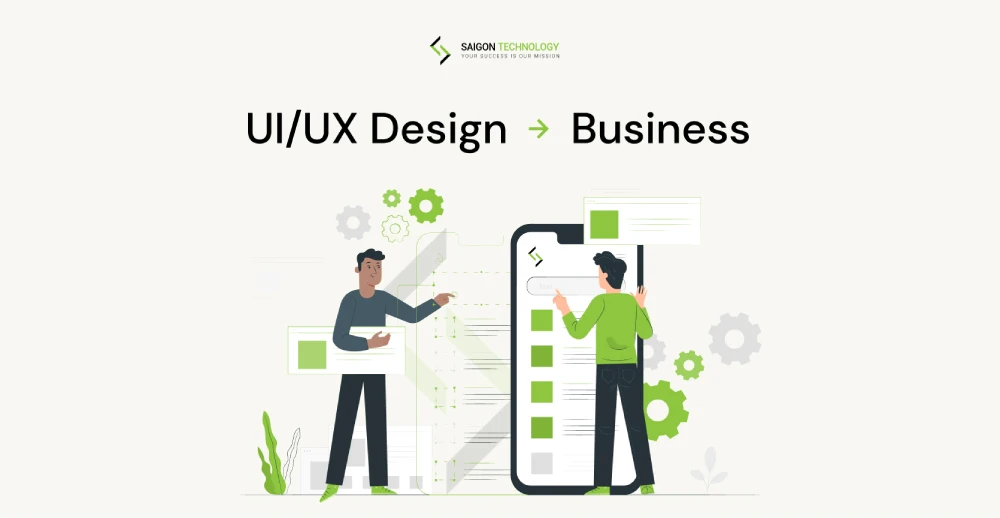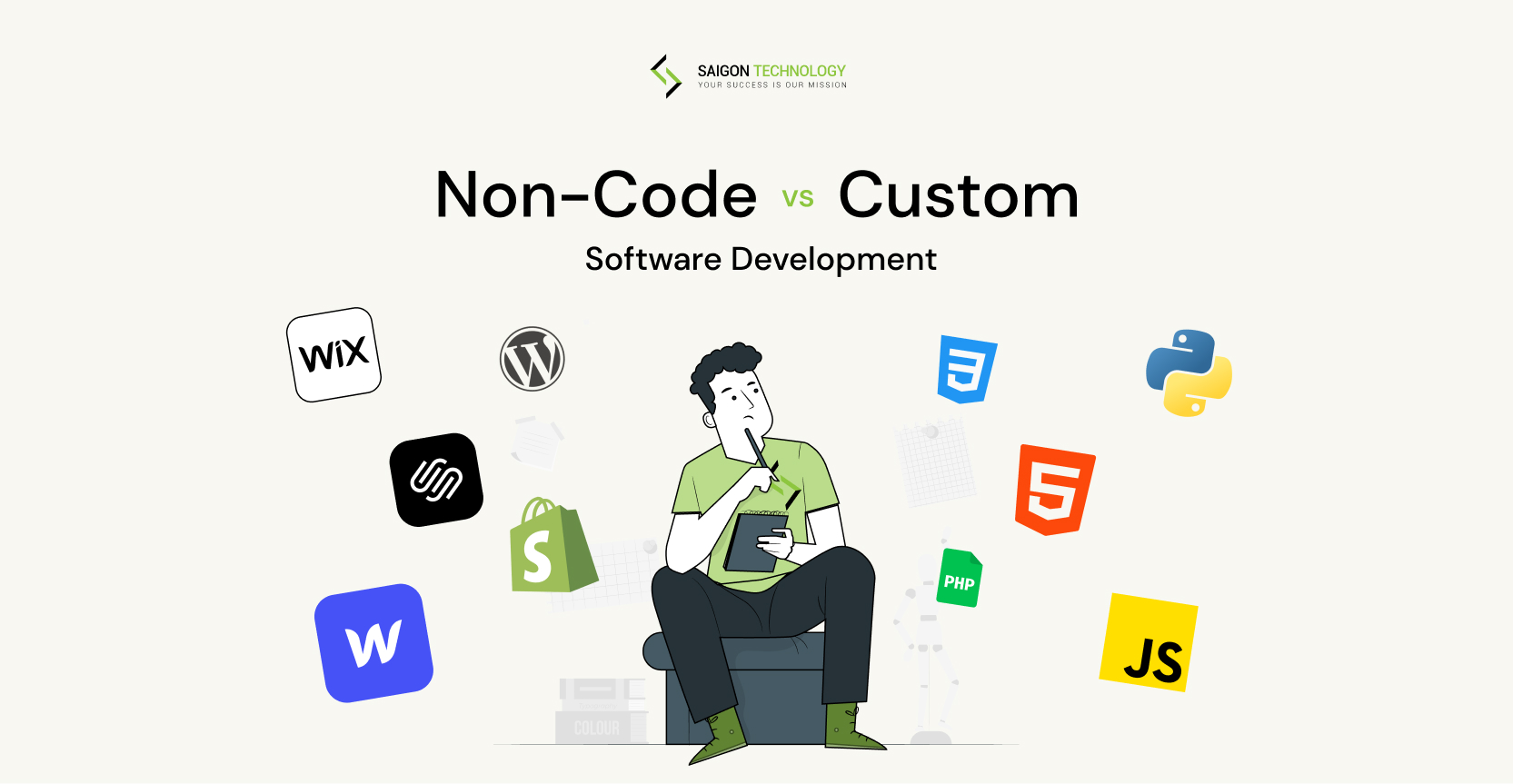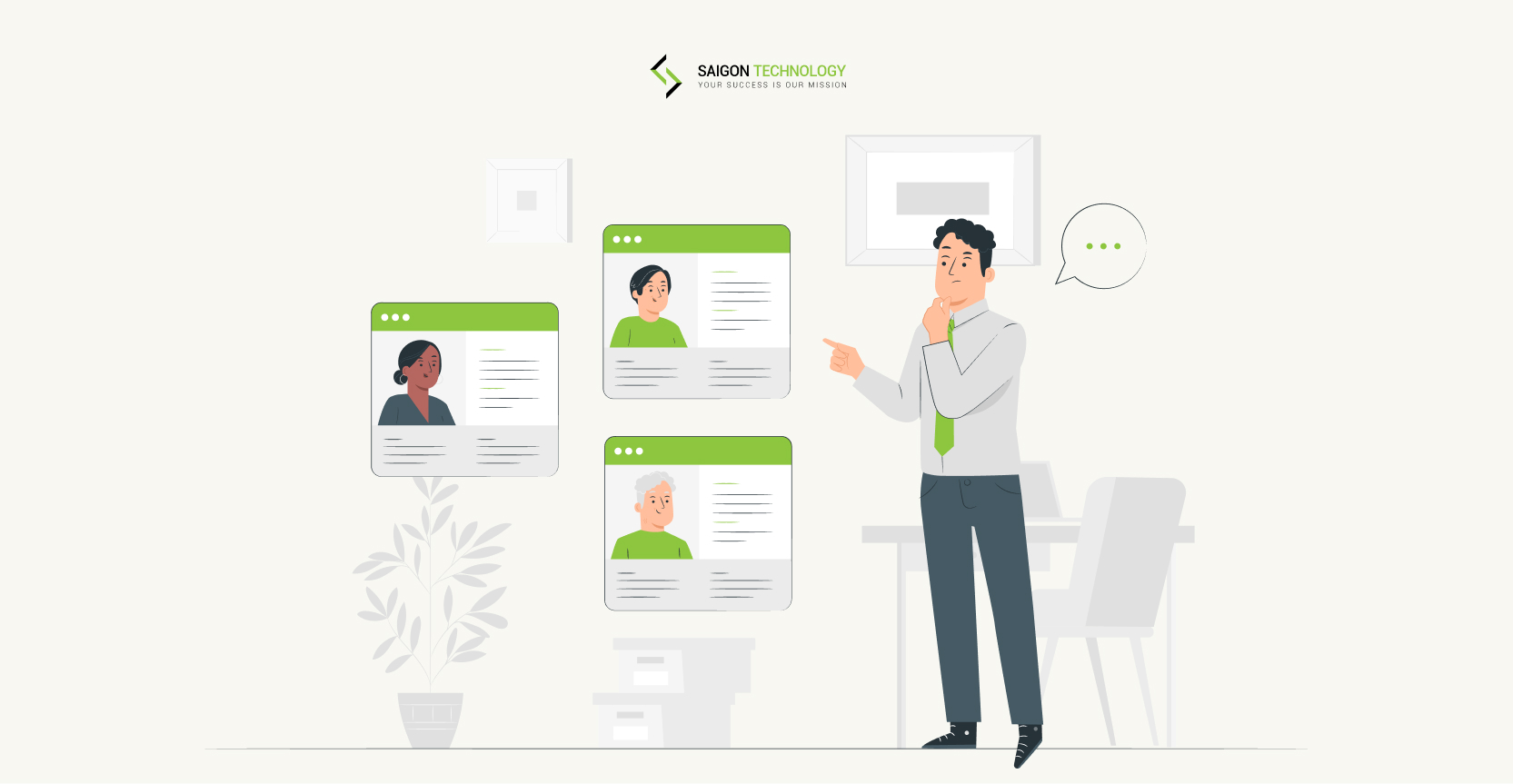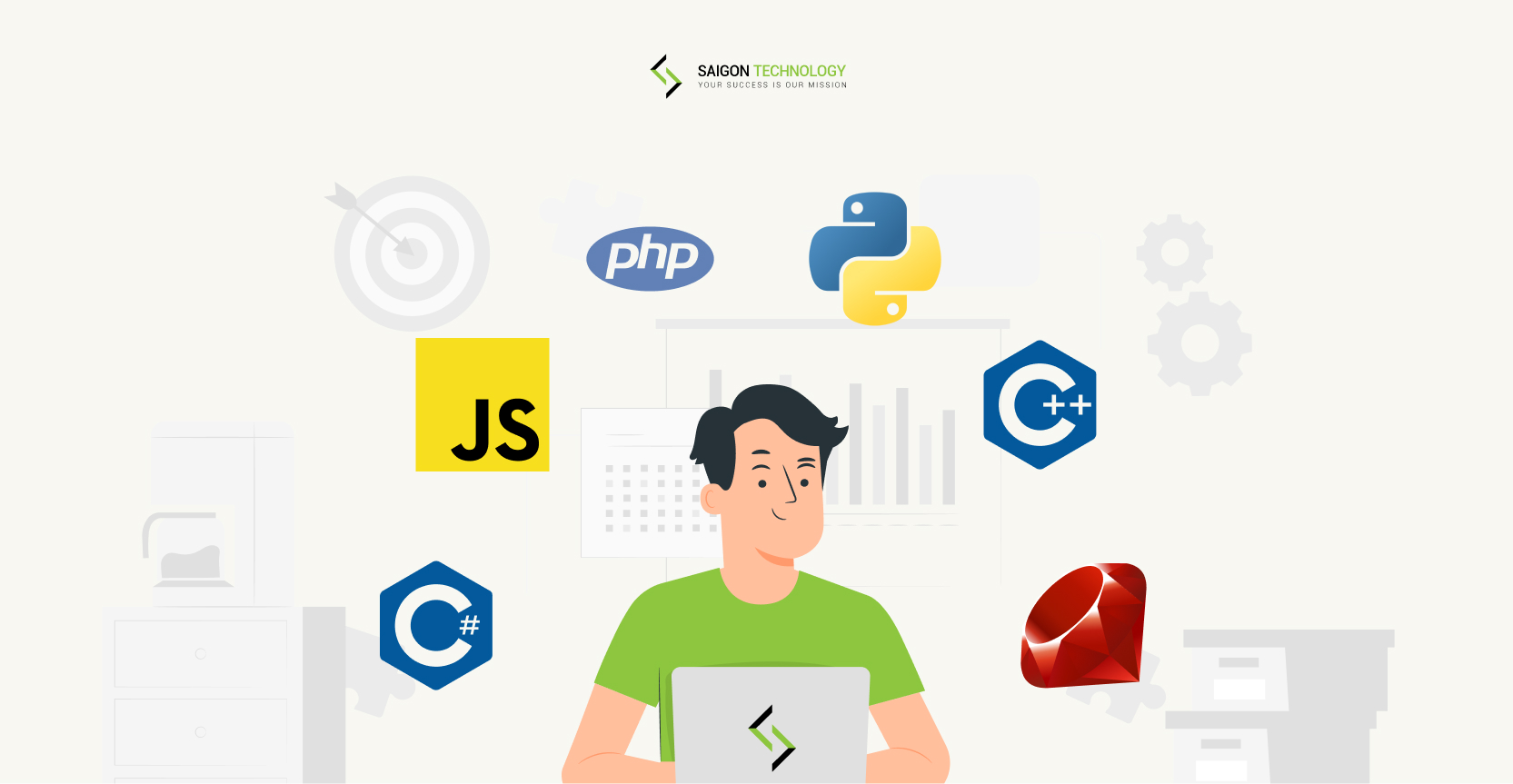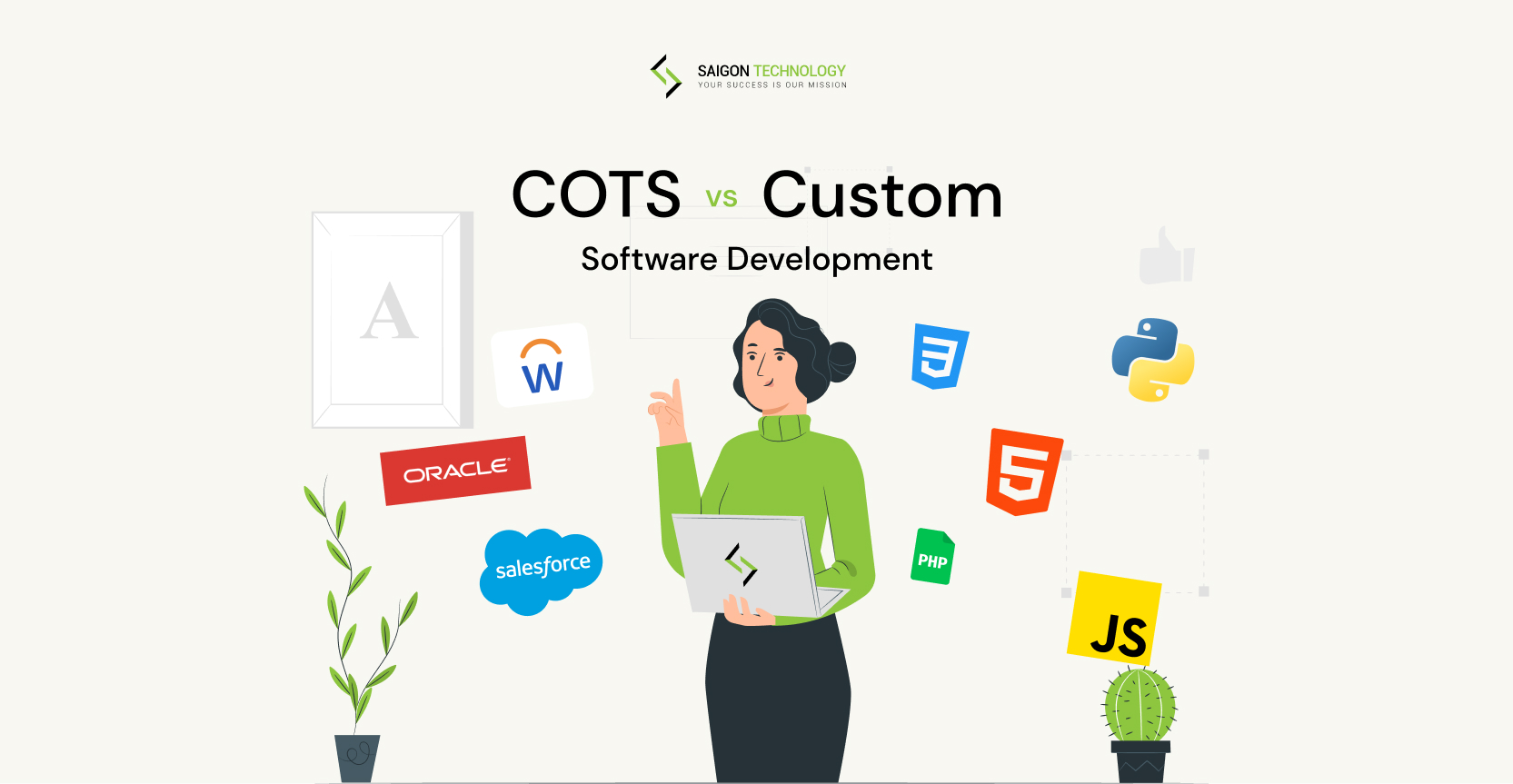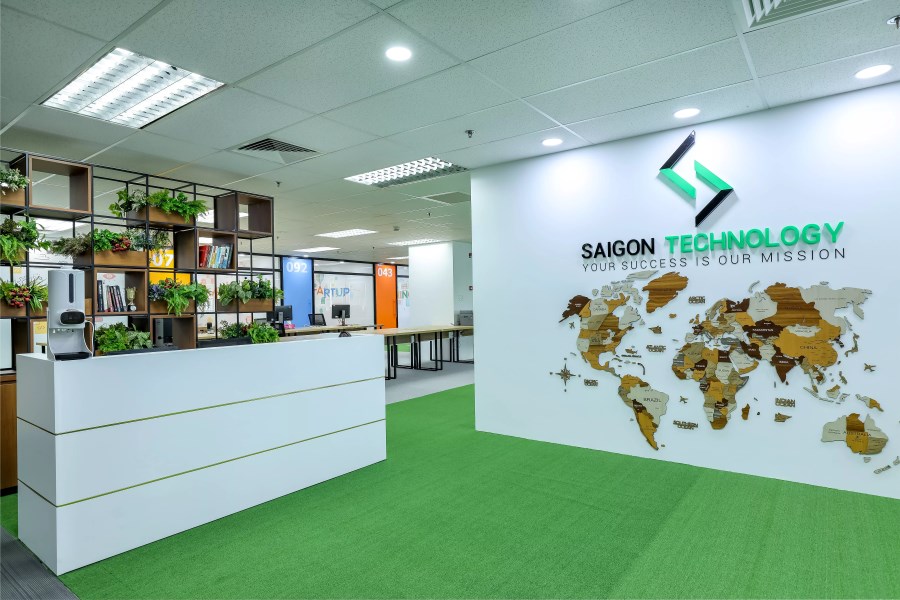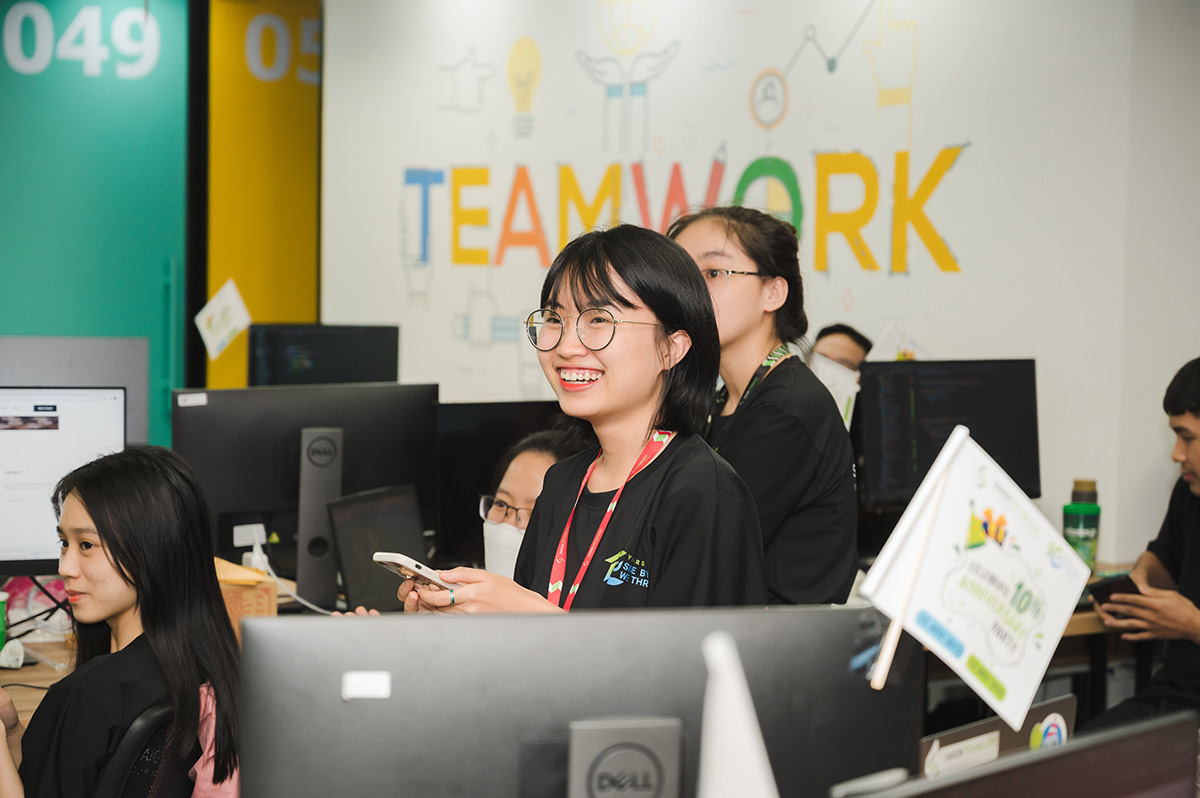Ready-made apps are known for automation and process optimization. However, they often lack essential features that you need for your business. In this case, you can use a development platform to make your own app with your in-house team. Alternatively, collaborate with external custom app developers and let them handle the task. So what is custom application development? And how does it help your business?
The global custom software development industry is expected to reach an impressive $146,180.9 million by 2030, with an impressive CAGR of 22.4%. The concept of bespoke app development is that your unique idea needs a unique app to shine. Nothing is better than a custom app because it has all the features you need to satisfy your target audience. This way, your business will grow and stay competitive!
This article will help you explore the ins and outs of custom app development, its benefits, challenges, and the development process. Keep reading to discover!
What is Custom Application Development?
Custom app development is when you design, create, and deploy apps tailored to meet some unique needs. Unlike off-the-shelf software, custom-made or bespoke apps are built from scratch. The tailor-made solutions allow the apps to address specific use cases. This concept applies to both web application development and mobile app development.
Building custom apps is on the rise due to their outstanding characteristics, such as:
- Supporting both external and internal uses. For external uses, you can configure your own app for e-commerce, games, and education. You can also develop custom business apps for internal needs, like customer management, production monitoring, and time tracking.
- Developed using various programming languages. For example, developers may use Java, C#, and Python to build the app. Some common frameworks for building custom apps are React, Angular, Vue.js, and .NET Core.
- Having core features to meet specific needs rather than using standard software solutions.
- Exclusively used by the commissioning organization or client. Thus, a bespoke app development solution won’t be available to the general public.
- Serving diverse purposes. Bespoke app development assists you in automating business processes. You can also handle data analysis and customer relationship management more easily.
- Providing greater customizability and flexibility. Scalability helps you address specific challenges, too.
- It can be simplified by low-code platforms and containerization. These solutions make the apps more cost-effective and efficient.
- Align with your goals to maximize success. Use strong architecture, API integrations, and UI/UX design. This will create a seamless, intuitive user experience and meet business goals.
What is Custom Web Application Development?
Custom web application development is an instance of the umbrella term above. It is focused on the development of applications accessed by users via web browsers from their computers, phones, tablets, and any other devices. The main feature and advantage of custom web application development is that the client can ensure their solution is accessible and responsive on screens of all sizes and in all browsers.
What is Custom Mobile App Development?
Custom mobile app development is similar to the web app services described above, but it is focused on delivering the best options for the existing operating systems and mobile devices. A mobile application development solution (including custom Android app development, custom iOS app development, and Apple-specific solutions) needs to ensure that the app:
- is available on the most popular models of mobile phones, tablets, and wearable devices
- can adapt to any screen size
- is compatible with the top operating systems
- can be easily listed on the App Store
- will adapt to future OSs, screen sizes, and models (for example, the foldable smartphones)
Developers can use popular cross-platform frameworks like React Native, Flutter, and Xamarin to create apps that work on both Android and iOS. These frameworks speed up development, cut costs, and maintain a consistent user experience across devices.
Custom vs. Conventional App Development
Software can be done in three main ways: no-code, low-code, and custom. The first two approaches are often grouped as ready-made apps, while custom application development offers a customized app with specific features. Let’s see how no-code, low-code, and custom business application development work!
No-code development:
This method doesn’t call for coding skills. Tools like Airtable and Appy Pie give you some drag-and-drop app creation features. No-code development is perfect for simple apps. You can launch them quickly. However, note that such apps don’t have advanced features.
Low-code development:
You use easy drag-and-drop interfaces to build your app. Yet, it allows for limited customization. For example, you can change the layout or design of your app a little bit. So, the low-code development platform ensures your app matches your business needs but requires some effort.
Custom app development:
You need skilled coding expertise to develop a custom app. You can decide which features to include in the app. The outcome of building custom apps is a highly sophisticated and adaptable app. You can partner with a development company to access experts in the field and speed up the process. Since the custom-developed software has your desired features, it can suit your customers’ needs. You can also easily update the app to accommodate the changes in your needs or market demands.
Off-the-Shelf vs. Custom Applications
Custom application development allows an app maker to create tailored solutions. It means that your unique app can meet your unique needs. The uniqueness also refers to a high level of flexibility in multiple ways.
For example, you can choose to outsource to a mobile app development company or build in-house IT teams. As long as you ensure that every app builder on your team is on the same page, your teamwork will lead to faster delivery.
You can also choose which features to build and how to build your custom business apps. This way, the app aligns with your goal and maximizes customer experience.
This comparison table will reveal the differences between off-the-shelf and custom apps. Let’s see which suits you better!
| Aspect | Off-the-shelf Apps | Custom Apps |
| Customization | Limited customization options | Fully customizable |
| Cost-effectiveness | Cheaper upfront | Higher upfront cost but more cost-effective in the long run |
| Scalability | Limited scalability | Highly scalable, adaptable to growth |
| Integration | Limited integration with existing systems | Seamless integration with existing systems |
| Development Time | Quick deployment | Longer development cycle |
| User interface | Basic UI | Custom design tailored to user preferences |
| Front-end Development | Basic front-end | Build custom apps with languages like HTML/CSS for unique designs |
| Back-end Development | Pre-built elements | Customizable development with specific frameworks and programming languages, such as Django, Ruby on Rails, and Spring |
| Technologies | Simple drag-and-drop interfaces | A wide range of tools and approaches for specific needs, such as: Full version control; Continuous Integration/Continuous Deployment (CI/CD); Security practices |
| API Development | Limited | Full support |
| Data Analytics and Business Intelligence Tools | Limited analytics features | Advanced features for deep insights |
| Maintenance | Minimal ongoing maintenance | Ongoing maintenance and updates (handled by external or in-house developers) |
Benefits of Custom App Development
Custom application development is a perfect choice when you want to scale and innovate your business over time. You will then enjoy flexibility and integration capabilities. Let’s explore the key advantages of custom business software!
1. Scalability and Flexibility
With custom app development, your apps can grow with your business. Why so? First, the custom business apps offer top-notch scalability because they have what you need. Whether it’s developed with Swift for iOS or another framework, the app can grow with your business.
You can also fine-tune the app to meet evolving requirements. This flexibility delivers strategic advantages since your software always aligns with your goals.
2. Cost-effectiveness
Custom app design may be expensive upfront. However, it saves you money in the long term. This solution eliminates unnecessary features and focuses only on what your business needs. The targeted approach, combined with advancements in low-code platforms, reduces development costs. So, you don’t have to pay for the features you will never use.
Additionally, custom business application development assists you in automating internal processes. The streamlined workflows then reduce operational costs.
3. Competitive Advantage
App customization gives you an edge over competitors. Imagine that you design your app with a unique user experience in mind. This way, you can address specific customer needs effectively. The competitive advantage also helps build strong customer relationships.
4. Support and Maintenance
Ready-made software may leave you stuck in vendor lock-in. Conversely, app services come with ongoing maintenance and updates.
As your business grows, you gain dedicated support tailored to your app. This proactive approach ensures the app remains reliable all the time.
5. Exclusive Ownership
When you invest in custom app development, you own the entire solution. You can control features, integrations, and UI/UX design without relying on third-party vendors. Exclusive ownership also protects your data and promotes operational independence.
6. Enhanced Integration Capabilities
Custom application development has superior integration capabilities because they have the necessary features to fit into your business’s existing platforms and workflows. The smooth integration ensures efficient data flows, streamlining customer interaction and improving decision-making processes.
7. Reliability
You build the custom app from the ground up. It means your app won’t have conflicting features. The result is a solution you can trust to perform consistently under your operational demands.
8. Security
Since you create the app with your business’s unique requirements, you can easily include advanced encryption. Feel free to add any security features like blockchain or two-step verification to maximize security.
9. Cross-platform Application
You have full control over your app’s compatibility, including iPhone models. You can decide which operating systems, devices, models, browsers, and versions it will support. This flexibility guarantees a consistent user experience and more accessibility for your target audience.
How to Build Custom Applications: Comprehensive Guide
How to create an app? Custom app development may take many different paths because it aims to fit unique needs. Some companies approach with a clear plan, including an MVP and specific details. Others might simply picture what they want the final product to look like. The process depends on the project, software, clients, and their particular requirements. Hence, custom services are flexible. Here is a basic outline of developing custom software!
Step 1: Brainstorming
You can work with a development company to handle the whole process. Yet, before that, you need to complete something on your own. Think about the challenges in your country, industry, and company. Then, explore how to create an app for your business that solves a problem.
Take Airbnb as an example. The founders were simply looking to make some extra money. Yet, their idea eventually turned into a $31 billion company. Airbnb allows people to rent out their homes or rooms to travelers. This service makes life easier for many people. That’s why it can generate revenue! Similarly, consider how your custom mobile application can address a need or improve something.
Step 2: Identifying the Target Audience
You are developing an app for your audience, right? So, try to understand them. You should ask yourself some questions like:
- Who are they? (gender, age, location, occupation, income, etc.)
- How often do you expect them to use the application?
- What makes your app unique in the market?
The answers determine how to develop your app. For example, Duolingo focuses on users eager to learn a foreign language despite financial limitations, while Airbnb targets budget-conscious travelers. Once the businesses know what their target users need, they can plan which features to build for their apps.
You can gather information about your target audience by directly asking people. Online polls are ideal for the study. You can also consult with an agency to refine your requirement analysis and create a detailed user profile.
Step 3: Business Strategy
Once you know your target user and the problem your app solves, plan how it will make money. The strategy you choose will affect both customer satisfaction and how quickly you achieve your goal. In this stage, ask the following questions:
- How will you reach end-users? How will they learn about the app?
- How much does the acquisition of one user cost?
- How much of a budget is needed to gain market traction?
It might seem like these questions can wait until after your custom app development, right? However, starting marketing early can help you generate revenue once your app is live. Your business strategy will also determine if your app needs SEO, ads, or deep linking. These elements are important for both the marketing and technical sides.
While planning, think about how you will use your app and how you will deliver it. Often, users can access the app through app stores. Businesses can also use the app for internal purposes. The public approach needs more work on marketing. You have to make it adaptable to different devices, too. On the other hand, in-house custom software doesn’t need that much marketing, but you must put more effort into making sure the app works with the company’s internal system. You can consult experienced app builders to overcome the challenges in this step.
Step 4: Specifications and Core Functionalities
You are not a tech expert? No worries! You don’t need to know all the technical terms. Instead, just provide simple guidelines. Your team can understand your vision. The more details you provide, the faster and easier the process will be. Here is how to make it:
- Define user roles: Think about who will use your app.
- User journeys: Consider how each type of user will interact with the app.
- Plan the app: Start with basic planning, like how many screens you need and the general design.
- Set up a list of features: Plan how the app works, any integrations needed, how you will track usage, and how to make money.
Step 5: Finding Experts to Develop an App
Once you have your idea, plan for tech specifications and marketing strategy. Then, you are ready to find a reliable partner. This step is simple:
- Go through listings: First, browse listing websites like Clutch.co or The Manifest. Use filters to find an application company in your region or one that offers specific services you need.
- Check the portfolio: Review the websites of your selected teams and see if they have experience working on apps similar to yours. The company should have worked in your industry so they will have a better understanding of market needs and trends.
- Read the blog: The company’s blog can give you some hints of their experience and expertise. By reading the articles on their website, you can get a sense of their knowledge base and see if they fit your project well.
- Check market presence: Check the company’s involvement in conferences or any awards they have received. Also, explore if the apps they developed are popular. Assess how active they are on social media, too.
- Check customer feedback or referrals from trusted sources: Your partner should have positive reviews from trusted sources. You can look for online feedback to check their reputation.
- Focus on data and technology security: In the first meetings with the company, check if they have a clear security strategy in place. Remember that you have to protect your app’s data and demand a secure development process.
- Spotlight on delivery time: Delays can happen in software development. Hence, discuss expected timelines with your chosen development company. A team that manages time well will be punctual for meetings. They should also show you a clear plan for project delivery.
- Choose offshore or onshore: Since you are considering outsourcing, you need to decide between offshore vs. onshore teams. Offshore companies in regions like Asia and Eastern Europe often provide similar, sometimes higher, levels of expertise. The best thing is their low labor rate. Onshore teams may cost more. Yet, their proximity to your time zone can make communication smoother.
Pro tip: Each solution offers its own benefits. However, offshore software development stands out more in many terms, such as cost-effectiveness and access to talent.
- Sign a contract: A contract details all the specifics, deadlines, and technical requirements. Be sure to read through it carefully before signing to avoid any future disputes.
This is just a short list to check when choosing a custom application development partner. Tailor it to fit your business needs. For example, put what matters most to you at the top of the priority list. It’s a great starting point to ensure you are setting up a successful collaboration for your project!
Step 6: Pre-development
Before starting the project, you and the outsourced company need to meet and define all the project details. The details here can be your drafts, ideas, and their presentation to the app. Negotiation plays a key role here since it shapes the entire project.
Typically, the development team will create a rapid prototype for your approval before proceeding. Use an Agile, iterative approach and custom project management apps to streamline and manage the process. This way, your app can evolve in the right direction.
6.1. Build a rapid prototype
A prototype is a working sample of the app with clickable elements. This product version helps you understand how the app will function and feel once released. Some developers, especially those using advanced app builders, may not offer a free prototype. It takes time and effort. In this case, you will likely receive design drafts and user journeys to give you an idea of what the prototype will look like. Then, you can evaluate which team best aligns with your app vision.
6.2. Build an MVP
An MVP is a scaled-down version of your app. It has enough features to be used by early or test customers. This stage is part of pre-development since early testing may reveal that your original app idea needs adjustments. In some cases, you have to deal with a complete change or even abandon your idea.
For internal apps, you can have a few employees test the tool to identify strengths and weaknesses. For public apps, use platforms like UserTesting or Userbrain to gather insights from real users. During the process, pay attention to demographics and analytics to adjust your strategy as needed.
- Pro tip 1: Do not rush to release every feature immediately. If you have already gained some core users, listen to their feedback selectively on your app wireframes and mockups. If users complain about certain features but continue to use the app, you are on the right track.
- Pro tip 2: Try to perfect the core 5 to 10 features of the MBP before adding new ones. You can gradually progress to full-scale custom development solutions.
Step 7: Development
You already have your MVP, which sets the foundation for the development stages. Depending on the MVP’s success and user feedback, you may not need the design stage. However, many custom web development companies will polish the app after the MVP to give it a fresh look and prepare for the full-scale release. The decision depends on your budget, timelines, and user feedback. Generally, the custom application development stage includes these steps:
7.1. UX/UI Design
After collecting feedback, you can refine your app. Every detail matters. You can add small animations, buttons, or page transitions. These engaging features will enhance user experience (UX) design and user interface (UI) design. Remember to update the design with new trends to attract users.
7.2. Development
Development is where the idea turns into a real app. The developers handle most of the technical details, like coding, frameworks, and programming languages. As a client, you just need to focus on two things: deployment and process control.
First, decide on the deployment plan. You need to determine how you will control the app once developed and whether to store it on your server or the cloud.
Second, ensure regular check-ins with the development teams. You can have meetings with them weekly or monthly to track progress. The meetings ensure the project stays on schedule without roadblocks.
7.3. Testing
Testers identify issues before your app reaches the market. You can conduct the tests with the same development team. Otherwise, work with an external QA team. Testers perform rigorous tests, including usability, security, and integration testing, to catch bugs early. After the tests, your app is ready for use!
7.4. Training
Your team must understand how to use the app, especially if it’s for internal purposes. Employees who will use it should be trained, tested, and join Q&A sessions. For apps designed for external use, your IT team needs to learn how to manage, monitor, and support the app once it goes live.
7.5. Launch
Now, you are satisfied with the app. It’s time for the launch. Monitor its performance and gather user feedback. Use them to improve the app and plan upgrades to keep it competitive and relevant.
How Much Does Custom App Development Cost?
Generally, small apps may start at $30,000. Meanwhile, complex solutions with advanced features can exceed $250,000. The custom app development cost depends on several factors. Here is the cost breakdown for custom app development:
- The complexity of the application: Features like push notifications, chat functionality, feedback systems, integrations, and camera/microphone add value and complexity to the project. Since developers have to work harder to create those features, the development time and pricing will increase.
- Design elaboration: A visually appealing mockup is just the beginning. Effective custom ad design requires a seamless user experience. Design is especially important for larger apps. In this case, designers have to balance features on a single screen without overcrowding it. Thus, their effort in designing templates and frameworks is more expensive.
- Cross-platform app development: Custom apps can work on multiple platforms. You can run them on Android, iOS, and web browsers. However, cross-platform app development requires more work than a single-platform one. Each supported device type, OS version, and browser adds to the cost. Not to mention that you have to pay for building, testing, and debugging applications across various environments.
- Data usage and storage: Some apps require cloud storage or integrations with external costs for hosting and server maintenance. You need more resources and expenses to manage customer-generated content, like photos and documents.
- Human resources: Large projects need big teams. The more staff you hire to build custom business apps, the higher the development cost. Location, experience, and salaries of developers directly affect budgets. The development team’s expertise and their chosen technology stack contribute to the overall cost, too.
- Ongoing maintenance and support costs: Even after launch, apps need constant monitoring, bug fixes, and updates. Hence, you should include future enhancements and regular consulting with experts on development costs.
How Long Does It Take to Build a Custom Application?
Building a custom application is an ongoing process. As your business grows, you keep updating and fixing your app. However, if you are talking about the time it takes to launch your app and start generating revenue, the typical timeline ranges from 4 to 9 months. The exact answer depends on several factors as follows:
Timeline for Each Stage
There are multiple stages in a custom application development project. Here is how long each stage takes:
- Planning and requirements: 2-4 weeks
- Design and architecture: 2 weeks
- Development: 3-8 months
- Implementation: 2-4 weeks
- Tests and maintenance: 3-6 weeks
- Production: 3+ weeks
Project Complexity
The development stage is the longest, typically taking 3 to 8 months. The scope can vary widely, depending on the project’s complexity and scope. For example, a simple app might take around three months. On the other hand, a robust e-commerce platform may require 9 to 12 months. So, when planning for your bespoke app development project, consider the following factors:
- Number of Screens
- Admin Portable Requirements
- Support for Multiple Platforms
- System Integrations
- Business Logic
- Reporting Requirements
- Data Migration
- Changes in Requirements
- Inconsistent Data from Stakeholders
Best Practices for Custom App Development
The best practices listed here can be considered step #8 in the development process – the post-development routine. They ensure that your app remains trendy at all times and also provide continuity of efficient app functioning.
Listen to the users
MVP emphasizes customer feedback. The Voice of the Customer is a powerful tool for understanding what users think of your custom software and what it’s lacking. No-code and low-code platforms, along with app builders, make it easy to update your app based on user feedback. This helps save time and avoid long development cycles. But it’s not just about listening! Once you’ve got the feedback, you have to act on what users are saying. When you improve your app, you show that their opinions matter. This way, you can deepen their loyalty to your brand.
To gather insights, you can use platforms like UserVoice, Braze, and Apptentive. A simple way to collect reviews is through a simple in-app feedback form. These tools can help you engage your users directly.
Continuous improvement
Want your app to generate sustained revenue? Then invest in ongoing development and continuous improvement. Simple tasks like bug fixing or adding a few features can ensure your app stays aligned with your users’ evolving needs. On the other hand, without this constant evolution, your app’s performance will drop, which affects the revenue.
To ensure your app can thrive, follow up on every feedback or improvement suggestion you receive. It would be perfect to keep the same development team on board. Since those custom app developers have worked on your project, they know how to optimize your software’s performance. The expert team also ensures ongoing support to keep your app updated.
Seamless Cross-Platform Experience with Mobile Applications
Custom application development is a game-changer because it offers access to your application across laptops, phones, and other mobile devices. However, you have to ensure a smooth transition for users as they switch between platforms.
For example, suppose a user starts an activity on the web app. In that case, they should be able to continue it effortlessly on the mobile application, not relying on a mobile-optimized website.
You should also build custom business apps and make sure they can work with all trending operating systems. Otherwise, you will lose a significant portion of your user base over time. So, after your initial app release, the goal should be to establish a ubiquitous presence across various devices and operating systems.
Use cutting-edge technologies
The technology industry keeps evolving. Thus, businesses have to choose the latest technologies to stay competitive. The chosen languages, frameworks, and tools should be adaptable to change and supported by vibrant developer communities. No-code and low-code platforms are now key to modern app development, making it faster and more flexible.
Outdated languages, like Pascal, may seem nostalgic but lack the functionality needed today. Meanwhile, modern options like Java continue to dominate as a popular choice for back-end development. You can get both reliability and widespread support.
The key is to keep your technology stack consistent and straightforward. Also, ensure the stack allows for future enhancements. This forward-thinking approach will keep your custom app relevant and ready for ongoing improvements.
Protect customer data
In just the third quarter of 2024, over 422 million data records were leaked, affecting millions of people worldwide. For startups, even one data breach can be a disaster. The data loss can damage trust and reputation. Some issues are hard to recover from. That’s why protecting customer data should be a top priority from the start.
To keep your users’ information safe, you must follow privacy laws like HIPAA and GDPR. Additionally, use tools such as privacy-as-a-service and stick to best practices, including enabling HTTPS and encrypting data. These simple steps can protect your users and avoid major issues down the road.
Challenges and How to Overcome Them
Custom application development comes with many benefits. However, some hurdles may arise due to the complexity of aligning technical needs with business goals.
Balancing Cost with Quality
It would be hard to get high-quality software while staying within budget. Businesses want to cut costs. Without enough budget, you will encounter reduced testing, inadequate infrastructure, or inexperienced developers. These compromises lead to technical debt. In the end, they will impact the software’s performance and scalability.
Solutions:
- You should first establish a realistic budget. A proper financial plan allows you to allocate resources effectively. Don’t forget to invest in quality assurance.
- You can use Agile methodologies to ensure functionality without overspending. In this manner, your team focuses on high-priority features and regular reviews. You can then minimize the need for costly rework.
- Hire skilled developers or partner with a reliable company. This approach is costly upfront, but don’t worry! You can reduce long-term tests when your project is in the hands of professionals!
Managing Changing Business Requirements
Business needs often change during development. Once an idea pops up, the whole custom application development project will be affected. The misalignment between stakeholders and developers can also delay the project. Your team members would be frustrated, and you would have to spend more time on rework.
Solutions:
- It would be best to break your project into iterative sprints. This method allows you to easily manage tasks. You can also adapt to change without disrupting the overall timeline.
- Try to meet your teammates regularly. When any problem arises, everyone knows and works together to find a solution.
Overcoming Resource Constraints in Development
You need a lot of resources to build a custom app. Limited resources like skilled developers, time, or infrastructure can hinder project progress. In this case, your team will struggle to meet deadlines. They will be burnt out or end up with incomplete features.
Solutions:
- You can outsource to experienced software development agencies. Your partners have the necessary resources for your project and know how to bring out the best in your project.
- Focus on project management. With proper workload allocation and realistic timelines, your team can deliver high-quality output.
What Makes a Custom Application Successful?
You need to address several factors to achieve success with your custom app. These aspects go beyond just functionality. Let’s see what to consider!
Marketing
The primary goal is to target the right consumers effectively. For example, if you are catering to a luxury market, an iOS-based app will be better. In this case, proper marketing ensures your app reaches its intended audience. You can also align with the needs of potential end-users. Even the best custom app design may fail without the right platform targeting and outreach.
User-Centric Design
A focus on user-centricity ensures retention and encourages users to come back repeatedly. A custom app design should be intuitive. Also, include a seamless UX/UI that follows natural usage patterns. As you align the usability expectations of users, the app becomes easy to navigate and enjoyable to use.
Integrate support features, too. For example, you can add a chat for immediate assistance. This simple addition improves the overall user experience. Accessibility features, like voice-led navigation, are equally useful, especially when more people are utilizing virtual assistants.
Product
The custom software itself is a combination of the above elements. Custom services must meet high standards to solve customer problems quickly. The fast loading times and stable functionality are needed, too.
Besides, data analytics and business intelligence (BI) tools are on the rise. These technologies provide actionable insights for continuous improvements. You can also integrate AR/VR elements to enhance user engagement and create immersive experiences. As you integrate custom analytics applications, you can also track the performance of your software. The real-time data then allows for informed decision-making.
Additionally, you should incorporate user acceptance testing and gather feedback from beta testers. These tips help refine your app before full deployment. Together, they make your app successful in the long run.
Finally, the app should stick to the KPI you set in the first stage. This way, you can ensure the final product will meet both business and user needs.
Case Studies: Custom App Development in Action
With over 12 years of experience, we have delivered many successful custom app development projects. Look at this Welio project to see how Saigon Technology pulled it off!
Project Overview
Welio is a telemedicine app. Doctors and patients can connect via this app for virtual consultations. Our client wanted to create an easy-to-use platform with strong backend functionality.
In this project, we tried to improve workflows and business efficiency. Our custom healthcare software development solution aims to make healthcare communication smoother and more effective for everyone. So, we developed a feature list:
- Clinic management
- Appointment scheduling
- Secure video calls
- Storing patient records
Challenges
- We faced tons of challenges when working on the project, such as:
- The app had to manage large amounts of multimedia content daily while staying HIPAA-compliant.
- The design needed lots of customization to fit user needs.
- The old video call system had to be replaced with Twilio for better performance.
- The logging process should be simpler.
- We had to add new chat and messaging features.
Solutions
After the problem-understanding step, we created the most suitable solutions. Our custom services deliver exactly what Weilio needs. For example, we added all the features that Welio asked for. We followed Microsoft’s guidelines to ensure the app meets security standards and kept everything HIPAA-compliant. In the end, the custom app satisfied our client’s needs, simplifying communication between doctors and patients.
Learn more: Our Mobile Team Manager is a cloud-based application.
Conclusion
Custom app development is all about creating tailored solutions that fit your unique needs. The software will greatly impact your business workflows, efficiency, and user experience.
Saigon Technology is here to turn your ideas into reality. Our top-notch solutions drive success. Ready to start? Contact us now and build something amazing!
FAQs
How can I choose the right custom app development partner?
To choose the right partner for your custom application development project, take these steps:
- Check the company’s portfolio first. They should have experience in creating apps similar to yours, such as e-commerce platforms or workflow automation tools.
- Look for expertise in API development and integration with cloud platforms.
- Read customer reviews to assess their reliability.
- Explore their custom app developers’ expertise and their ability to handle complex projects with effective project management tools.
- Ensure they offer advanced solutions like data analytics and business intelligence (BI) tools and custom portals.
What are some types of custom applications?
There are several ways to classify custom apps. For example:
- Industry-specific apps (Healthcare, e-commerce, fintech, and banking apps)
- Destination-specific apps, such as CRM, EPR, and operations management apps.
- Technology-specific apps (AI and IoT apps)
- Platform-specific apps (Desktop, mobile, and cloud-based apps)
What are the differences between native and hybrid apps for custom development?
Custom app development solutions can be native or hybrid apps. Native apps work on a specific platform, like Android or iOS. The apps have specific device features that perform excellently. On the other hand, hybrid apps can run across multiple platforms. However, they lack device-specific features.


